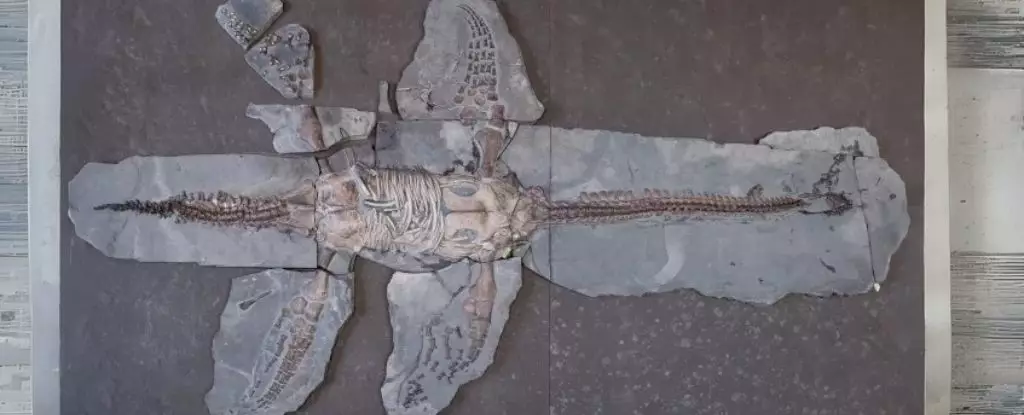The age of dinosaurs was marked by a diverse array of organisms, among which the plesiosaurs emerged as formidable marine predators. These unique creatures, characterized by their long necks and four flippers, navigated the waters of the Earth’s oceans during the Mesozoic era. Recent advancements in paleontological research have provided newfound insights into the physiology and adaptations of these ancient reptiles. A notably complete fossil discovered in Holzmaden, Germany, dating back approximately 183 million years, has revealed features previously unknown to the scientific community.
The fossilized remains of a 4.5-meter-long plesiosaur, now designated MH 7, have ignited debates regarding their anatomical structures. Utilizing advanced microscopy and spectroscopy, researchers from Lund University, led by paleontologist Miguel Marx, meticulously examined the fossil. The findings highlighted the presence of flipper scales reminiscent of modern sea turtles, suggesting a dual function: not only did these adaptations facilitate swimming, but they may have also assisted in locomotion along the seafloor.
Intriguingly, plesiosaur fossils are not uncommon, yet soft tissue remains are exceedingly rare, with only about eight instances documented. This scarcity highlights the significance of the MH 7 fossil, as it allows paleontologists to draw parallels between the morphological features of plesiosaurs and existing marine reptiles.
An intriguing aspect of the findings relates to the contrasting texture of the skin around the tail and the flippers. The tail possessed a smooth surface akin to that of modern warm-blooded marine species, while the flippers exhibited small, irregular triangular structures. The research team posited that these features might have evolved due to convergent evolution, influenced by similar aquatic environments and hydrodynamic constraints. The flipper scales are hypothesized to provide traction while foraging on the seafloor, particularly in light of feeding behaviors that suggest a benthic lifestyle.
The textures and dimensions of these fossilized scales were comparable to the scutes found in both extinct and living turtles. Marx and his colleagues emphasized the importance of these features in understanding plesiosaur evolution and ecological roles.
Plesiosaurs displayed remarkable traits that suggest they may have been warm-blooded. Interestingly, while many marine reptiles evolved to become streamlined and fish-like, plesiosaurs retained a unique set of scales. The study found that the scales on the trailing edges of the flippers likely played a functional role in enhancing their swimming capabilities.
Moreover, the presence of pigment cells near the outer layer of the tail skin—though absent on the tougher flipper surfaces—indicates that plesiosaurs maintained certain reptilian characteristics even after transitioning to a fully aquatic lifestyle. Unlike ichthyosaurs, which lost their scales to minimize drag, plesiosaurs seem to have adapted their scales for improved adaptability in a variety of marine environments. This raises questions about the selective advantages gained through such evolutionary paths.
The diet of plesiosaurs is also a point of interest. The discovery of fossilized gut contents filled with bottom-dwelling organisms such as snails and crustaceans further establishes their role as benthic feeders, supporting the notion that their flipper scales were advantageous for grazing on the ocean floor. Additionally, the existence of preserved feeding traces provides further evidence of their ecological interactions, indicating they were well adapted to their marine environment.
Research into MH 7 not only sheds light on the anatomical adaptations of plesiosaurs but also contributes to our understanding of the evolutionary mechanisms operating during their reign. The presence of these unique flipper scales suggests functional elements that allowed plesiosaurs to thrive in diverse marine settings. As we continue to uncover the intricacies of prehistoric life, findings like these reinforce the value of paleontological research in painting a fuller picture of Earth’s ecological history. Through these lenses, our fascination with the past deepens, reminding us of the complexity and dynamism of ancient marine ecosystems.


Leave a Reply